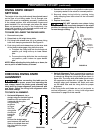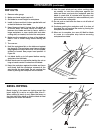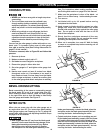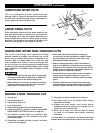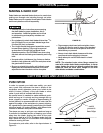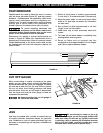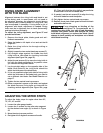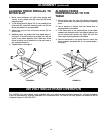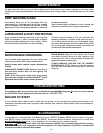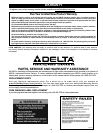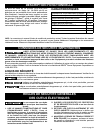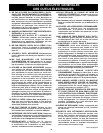
28
CUTTING AIDS AND ACCESSORIES
(continued)
AUXILIARY RIP FENCE FACING
Use an auxiliary rip fence facing when needed for
special cuts, such as ripping material that is thin
enough to slide under the rip fence provided with
your saw, or when a taller rip fence is necessary to
complete your cut. To add an auxiliary wood facing
to one or both sides of the rip fence, select a piece
of wood with smooth surfaces, Attach the wood to
the rip fence with two clamps. (see Figure 32) For
most work, 3/4-inch (19mm) or 1-inch (25mm) stock
is suitable.
PUSH BLOCK
1. Select a piece of wood about 4-inches wide,
6-inches long and 1- to 2-inches thick (a cutoff
from a 2 by 4 makes a good blank for a push
block).
2. Drill a hole in the block and glue in a dowel
to use as a handle (you can angle the hole to
provide a more comfortable grip on the handle).
3. Glue a piece of rough or soft material such as
sandpaper or rubber to the bottom of the block
to grip the workpiece (old mouse pads work
well). See Figure 34.
AUXILIARY MITER GAUGE FACING
FIGURE 32
FIGURE 34
FIGURE 33
A
An auxiliary miter gauge facing is used to increase
the surface area of the miter gauge face.
If desired, you can fit the miter gauge with an
auxiliary wood facing that should be at least 1-inch
(25mm) higher than the maximum depth of cut, and
at least as wide as the miter gauge.
This auxiliary wood facing can be fastened to the
front of the miter gauge by using two wood screws
through the holes (A) provided in the miter gauge
body and into the wood facing. See Figure 33.
Make sure the screws are long enough to secure
the facing, but do not extend all the way through
the wood.
2”
6”
Sandpaper
or old
mouse pad
material
Wooden
dowel
4”



